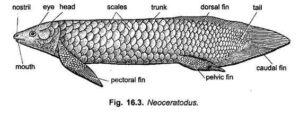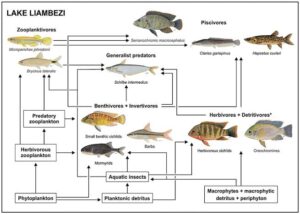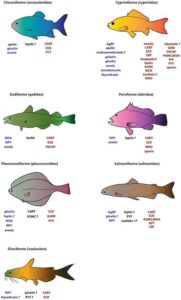Back to: ZOOLOGY 300 Level
WELCOME TO CLASS!
I’m excited to have you back again—your consistency shows that you’re committed to becoming a brilliant zoologist. Today, we’re diving into something that brings fish to life in a whole new way: Fish Behaviour and Ecology.
Have you ever stood by a river in Kogi or watched a fishpond in Ogun and noticed how some fish swim together, hide under rocks, or leap out of the water? These are not just random actions—fish behave in specific ways for reasons tied to their survival, reproduction, and interaction with their environment. Let’s understand how and why.
Fish Behavior And Ecology
Fish Behaviour
Fish behaviour refers to all the things fish do, consciously or instinctively, to stay alive and reproduce. These behaviours are shaped by genetics, environment, and experience.

- Schooling
Many fish swim in groups called schools. This isn’t just for fun—it helps with:
- Protection: There’s safety in numbers; predators find it harder to target one fish in a moving group.
- Efficiency: Swimming together reduces water resistance.
- Feeding: Schools help fish locate food faster.
An example is the sardine run seen off West Africa, where thousands of sardines swim together, creating a spectacle for both humans and predators.
- Feeding Behaviour
Fish feed in different ways depending on their type and environment:
- Carnivores like barracuda hunt smaller fish.
- Herbivores like some tilapia graze on algae and aquatic plants.
- Omnivores, such as catfish, eat both plant and animal matter.
Some species, like electric fish, use weak electrical signals to locate prey in murky waters.
- Territorial Behaviour
Some fish, especially during breeding season, guard a particular space. Males of some species dig nests and aggressively chase away intruders.

You may have seen this with mouth-brooding tilapia that protect their eggs or fry. This behaviour ensures their young survive.
- Reproductive Behaviour
Fish reproduce using unique methods. For example:
- Courtship rituals like colour changes, dances, or bubble nests.
- Mouth brooding, where parents (often the male) keep fertilised eggs in their mouths for protection.
- Migration, like salmon swimming upstream to lay eggs in freshwater.
In Nigeria, understanding these behaviours helps aquaculture experts create better breeding conditions.
Fish Ecology
Ecology focuses on how fish interact with their environment and other living organisms.
- Habitat Preference
Fish occupy different niches:
- Surface feeders eat insects and plankton near the top (e.g., some tilapia).
- Bottom dwellers like catfish scavenge at the river or pond floor.
- Some prefer still water, while others thrive in fast-flowing streams.
- Predator-Prey Relationships
Fish can be both predator and prey. Their shape, colour, and behaviour help them survive:
- Camouflage: Fish like flatfish blend with the seabed.
- Speed and agility: Tuna are fast swimmers to catch prey and escape predators.
- Symbiotic Relationships
Some fish engage in mutualistic behaviour:
- Cleaner fish like wrasses eat parasites off larger fish.
- Others live among corals or sea anemones for protection.
- Human Impact
Pollution, overfishing, and dam construction can disrupt fish ecology. In Nigeria, improper waste disposal in rivers affects fish breeding and behaviour. Conservation and sustainable fishing practices are vital for maintaining healthy ecosystems.

Summary
- Fish behaviour includes schooling, feeding, mating, and territorial defence.
- Ecology covers fish interactions with their environment, including predator-prey dynamics and habitat use.
- Understanding fish behaviour and ecology helps with fisheries management and conservation.
Evaluation
- What is schooling in fish, and why is it important?
- Name three feeding types among fish and give an example of each.
- Describe one reproductive behaviour seen in Nigerian fish species.
- What is the ecological role of bottom dwellers like catfish?
- How can human activity negatively affect fish behaviour and ecology?
You’ve just unlocked the hidden world of how fish live, act, and interact with the world around them. These insights don’t just help us understand fish better—they help us take better care of our rivers, lakes, and oceans. Keep your curiosity alive—we’re building something powerful together.
